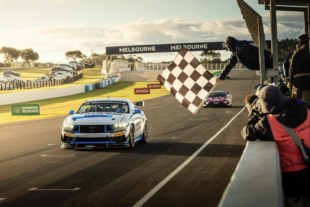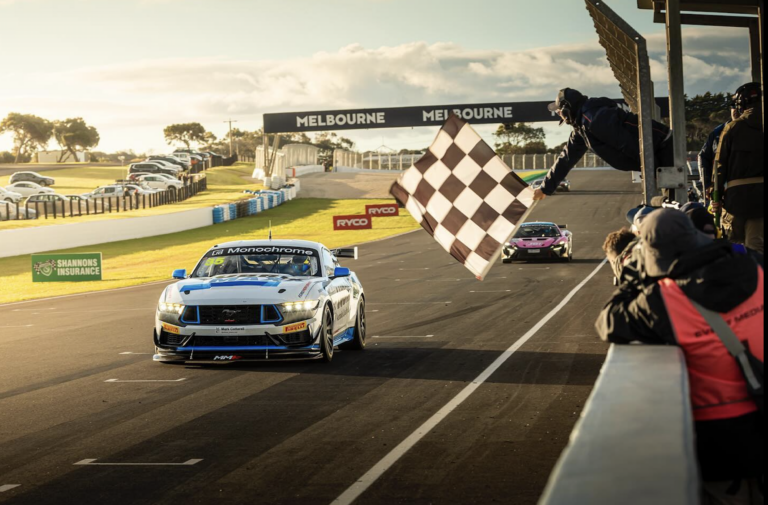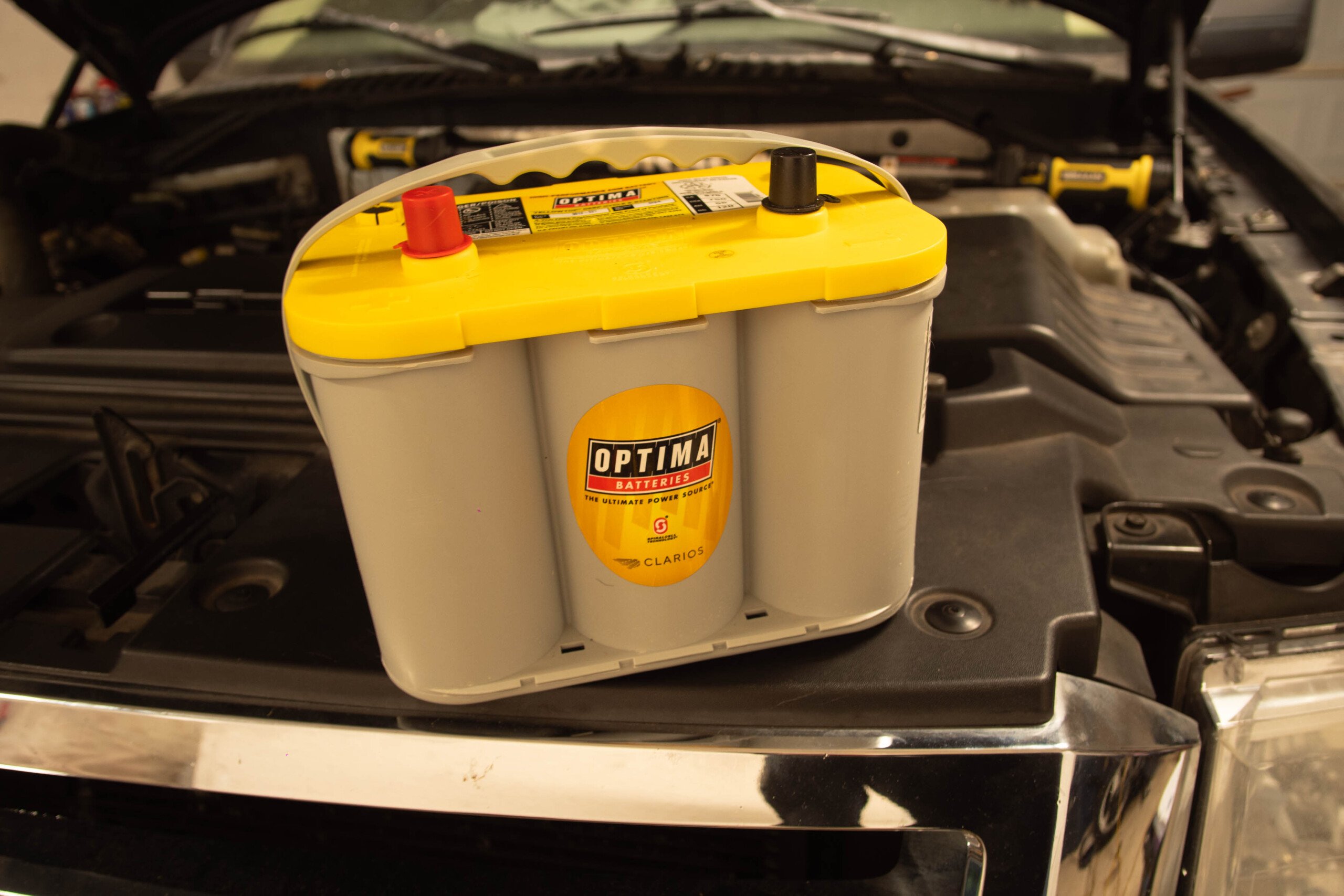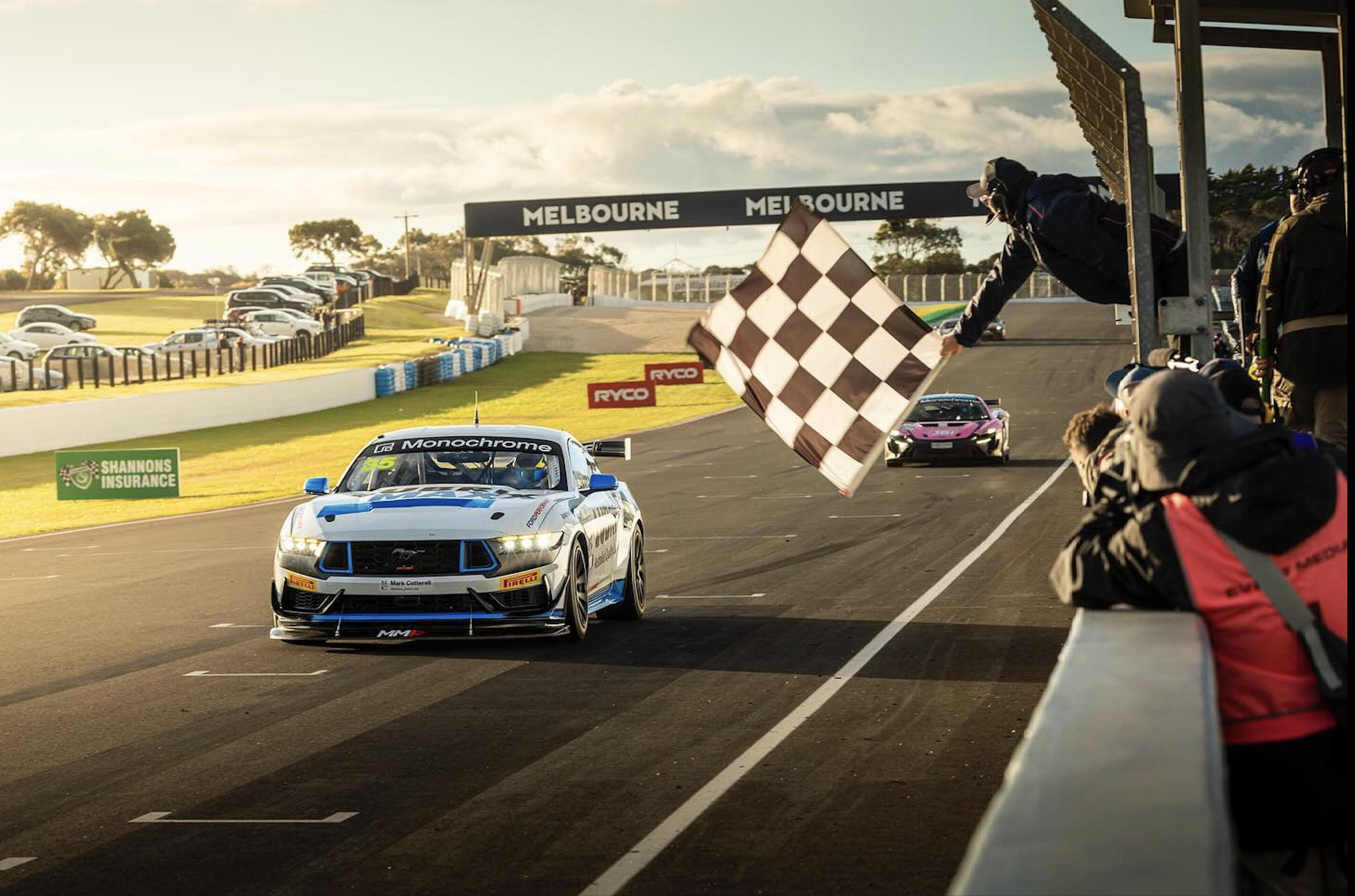One of the highlights of any Ford engine builder’s life is the moment they build their first 351-Windsor. There is a lot to consider when selecting the parts that will fit your wallet and desires. But what parts should you spend more of your money on? Follow along with Dr. Wrench, Dale Metlika of Pro Power, while he guides you through his forte that is designing racing engines.
The guys here at PowerTV have provided me with this forum to inform and educate you through my experiences, presented to you here under my digital author title of “Dr. Wrench.”
I’ve spent over 25 years working in the racing and performance industries, and have extensive experience working with internal engine parts for both street and racing. I was the Event Director for the 1st World Ford Challenge and later for the first two years of the NMRA. I have also worked with the big auto manufacturers and heads-up racers. I will be sharing my knowledge right here with you guys, so read on and look for more great stories in the near future.
And now to the subject at hand: Stroker Windsors!
You already know that big cubes mean big horsepower and big torque. You’ve had your eye on a huge 351 Windsor engine for some time now, and dreams of the extra cubic inches have you itching to feel the power in your Ford project. But, before you just jump right in and slap any old stroker Windsor in between the frame rails, there are probably a million questions you could ask.
This here is our 408ci Stroker 351W that we just built for our Project 666 Mustang. We’re going to show you how to build your own.
If you have been running the standard 302 combination, there are quite a few things to learn about both Windsor engines and stroker Windsors. Even though Windsors are related to Ford 289 / 302 small blocks, the 351 Windsor engine is different in many ways. The affordability and availability of large displacement Windsors means that a standard old 351 has gone by the wayside. I have compiled a top ten list of tips to help you with your first stroker Windsor package.
Tip 1: Use the Right Block
The base of any good stroker monster combo is the engine block and there are many options to choose from. Blocks are available in a wide variety of configurations, so make sure you choose the correct block for your application.
OEM Blocks Are Not All the Same
Many of the OEM Ford Windsor blocks are not set up to use OEM style hydraulic roller lifters. If you want to use hydraulic roller lifters, you will need special cams and/or link bar style lifters. OEM blocks are typically only good up to limited horsepower levels and should only be used when staying naturally aspirated.
Additionally, the main webbing and cylinder walls are typically thinner than a big power package can handle.
OEM blocks come in two deck heights: 9.480” and 9.500”. The shorter blocks were standard for ’69 and ’70, and the ’71 and later blocks measuring an extra .020” higher. This is an important specification when choosing your rotating parts so you don’t end up with pistons sticking out of the top of the deck.
For Higher Power You Need A High Performance Blocks
If you are planning on making tons of power and torque, your best option would be a good aftermarket block.
Ford Racing, World Products, and Dart all offer great blocks for anything from street machines to 2500 horsepower race cars.
Aftermarket blocks primarily come with the later style 9.500” deck height and have the meatier main webbing and casting thicknesses that are needed more powerful engines. These blocks are also available with a much larger bore capability, which allows for more cubic inches with the same stroke. Larger bores permit greater air flow that is needed with additional displacement.

If you are going to make some serious power you will need to get a nice beefy block like this fine Man-O-War cast iron piece from World Products. (photo courtesy of World Products)
Tip 2: Pick a Stroker for Your Specific Needs
Deciding on a combination of stroke and bore can be very confusing when trying to purchase a stroker Windsor combination. A large selection of strokes is available and choosing the right one will depend on how the engine will be used.
Long Stroke or Short Stroke?
This may seem simple…just get the biggest stroke, right? Wrong. Do you plan on revving the engine up to the moon? Do you want a street torque monster? Will you be running a 500 horsepower fogger nitrous kit? You have to know what your ultimate goal is for this engine project so you can choose the appropriate stroke and cubic inch displacement.
Street Engines Like Long Strokes
For lower RPM applications (street engines, hydraulic roller cams, pump gas…etc.) it is probably best if you pick a long stroke. Long strokes would be considered 4.000” to 4.250” giving you 408 to 434 C.I.D. on a .030” over bore.
The longer stroke cranks will give you gobs of bottom end torque and match the “street” type components you will have in the rest of the engine. Plus, the long stroke will give you that seat of the pants feel that makes you smile when you mash the pedal.
Shorter Strokes for the Race Guys
For higher RPM engines and combinations using power adders (blowers, turbos, nitrous), you may want to limit the amount of stroke you will be using. Why? Well, the shorter stroke is able to rev more quickly and handle high RPM’s. Also, as the stroke increases, the piston wrist pin moves higher and higher inside the piston to compensate and piston skirts become shorter.
You need to keep the piston fairly tall to leave room for ring land spacing if the engine will be seeing extreme cylinder temperatures. If you use a piston that is too short in these powerful engines, you will see piston failure in no time. Short strokes would be 3.750” to 4.000” keeping you in the 383 to 408 C.I.D. range using the same 4.030” bore. Many boosted engines are built with the shorter strokes and big bores (4.125” or bigger) resulting in bigger C.I.D., without the sacrifice of the weak pistons needed with longer strokes.

Stroker Windsors require pistons with the pin moved closer to the top of the piston. Note how close the pin is to the oil ring groove.
Tip 3: Buy a Kit if Possible
Now you have the block and you need to fill it with some well chosen rotating parts. Given the abundance of choices of strokes, rod lengths, and pistons, it is definitely best to buy a Stroker Kit. Kits are great, because they save you the time and headache of trying to figure out what rod to use with what stroke and what compression height piston you should buy.
Which Crank?
The stroker cranks are a little more complex than just having additional stroke. The counterweights and journals of strokers are set up for specific connecting rod dimensions: journal sizes and lengths. A kit matches the rods with the exact crank, so you don’t have to worry about your pistons hitting the rods or if the rods bolt onto the crank correctly.
The Rods Have to Match
The connecting rods in a kit are matched not only to the crank, but also to a specific piston design. The rods are picked by the kit designer to match journal sizes on the crank, clear the counterweights, and fit the pins correctly on the pistons.
Strokers Use Special Pistons
Pistons are the last major component in the kit. They have an exact pin height for the additional stroke and matched connecting rod. Kits include pistons that will not only ensure that you don’t have deck clearance problems, but also fit the rod correctly and clear the crankshaft during rotation. They will allow for correct compression ratio with the longer stroke.
Put Away the Micrometers for Now
Buying a stroker kit also saves you the hassle of trying to figure out which bearings you need to use. Chamfered or not chamfered? Chevy journal size or Ford rod size? The correct matched bearings come in the kit and keep you from breaking out your measuring tools.
Tip 4: Do it Yourself Stroker Math
If you don’t want to buy a kit you can still piece together your own stroker design. But, a little math is helpful when figuring out your combination if you want to come up with your own stroke, rod, and piston design. You can use this formula to figure out which combinations go together (samples in parenthesis):
Deck height (9.500”)
Minus ½ the stroke (4.000” stroke, ½ = 2.000”)
Minus the rod length (6.200”)
Minus desired deck clearance (.020”)
Equals piston compression height needed ( 9.500-2.000 = 7.500, -6.200 = 1.300, – .010 = 1.280”)
The chart here shows some popular rod, stroke, and piston height dimensions using a 9.500” block with .020” deck clearance
Stroke / Rod Length / Piston Comp. Distance
3.750” / 6.125” / 1.480”
3.850” / 5.956” / 1.599”
3.900” / 6.200” / 1.330”
4.000” / 6.200” / 1.280”
4.100” / 6.200” / 1.230”
4.250” / 6.250” / 1.105”

On the left is a stock height Windsor piston (1.774″ comp. distance) made for stock stroke (3.500″) and rod length (5.956″). The other piston is made for a stroker with the pin relocated higher.
Tip 5: Get Strong Enough Rotating Parts
If you are planning on building a massive Windsor, chances are that you don’t just want stock power. You want more power. That’s the whole point, right? So you have to make sure that you know your power goals when putting the engine together in order to buy the right parts.
Cast Crank or Forged Crank?
Most strokers use an aftermarket crankshaft that can be made from either cast steel or forged steel. Some companies call their cast cranks “Nodular” or use some other term, but they are still cast. These are great for strokers and are still considerably stronger than any of the factory cranks, but they have their limits. These cranks lose their desirability somewhere around the 600 horsepower mark, and may not be able to take the pounding that a forged piece can.
If you think you will ever (even way in the future) make more than the crank can support, go ahead and opt for the forged piece. Forgings are a lot stronger and are made from 5140 or 4340 steel that can take a lot more abuse than the cast pieces. Fortunately, either way you go, all of the cranks are usually well designed and have features for long lasting performance.
Rods for RPM
The rod choice is just as important. They will add significant horsepower, but if you will be spinning higher RPM’s, then the bolts used in the rods must be correct. OEM style I-Beam rods are great for lower RPM. In engines with less than 550 horsepower, they usually use some type of 8740 material fastener that will work for under 7000 RPM’s.
However, if you are going to be using a power adder or spinning more than 7000 revolutions, then H-Beam type rods with 8740 or better bolts are preferred. The bolts are important to RPM because as the engine races higher, the piston actually tries to pull the rods apart by the bolts, as the piston is trying to fly out of the top of the block.

Here you can see the differences between a forged 5140 type rod and a 4340 forged H-Beam rod. Notice the cap screw bolts on the H-Beam rods instead of the bolt and nut combination.
All Pistons are Aluminum
Yes, all pistons are aluminum. It is how they are manufactured that makes the difference in strength, as well as material. Hypereutectic pistons are formed by a process that distributes silicon equally throughout the alloy. These types of pistons are perfect for naturally aspirated street engines that won’t see much nitrous oxide. They run tight clearances for quiet operation and less blow by.
However, they don’t hold up to detonation or extreme pressures, so if you are planning on putting a little more heat in the cylinder, the forged pistons are the way to go. Forged pistons are formed under extreme pressure and heat for a denser packed alloy that is more forgiving under high heat. Plus if you are going with a supercharger, turbo, or nitrous, you will want to make sure the pistons are designed to deal with high cylinder pressures.
Tip 6: Double Check the Compression Ratio
Whenever you increase stroke, the compression ratio with the same cylinder head chamber size increases as well. Although flat top pistons with most 302, 331, or 347 engines yield a friendly 9 to 10.5:1 compression ratio, the same flat pistons with a stroker Windsor can make up to 13:1 plus.
It is important that you pick the proper dish size to achieve the correct compression ratio with the heads you will be using. Too much compression and your 419 Windsor will just detonate and end up destroying itself in no time.
Here is a handy guideline for compression ratios with some different strokes and piston sizes utilizing 61cc heads and a 4.030” bore.
Stroke / Piston Dish Volume / Comp. Ratio
3.000” (302) / -5cc (Flat Top) / 9.17:1
3.750” / -5cc (Flat Top) / 10.65:1
3.750” / -18cc Dish / 9.41:1
3.850” / -5cc (Flat Top) / 11.06:1
3.850” / -12cc Dish / 10.23:1
4.000” / -5cc (Flat Top) / 11.43:1
4.000” / -22cc Dish / 9.69:1
4.100” / -5cc (Flat Top) / 11.69:1
4.100” / -22cc Dish / 9.91:1
Tip 7: Stroke Your Air Flow Too!
Many of you may think that you simply bolt together a 408 cubic inch dream engine, slap on the heads, cam, and induction pieces you had on your 302, and you instantly have more power! Not true. The extra cubic inches do make more torque and horsepower at the bottom, but without more air you simply won’t make any more ponies.
Heads for Your Air Pump
With an engine simply being an air pump (more air in means more power), you have to pay specific attention to the heads. In order to rev the bigger cubes anywhere near 6500 plus RPM’s, you have to have heads that can support the air the new crank is trying to suck into the cylinders.
The easiest way to demonstrate this is if you had a 302 with heads that made a peak of 450hp at 6500 RPM and used these same heads on a 419ci Windsor it would probably still only make around 450 peak hp, but at a paltry 5000 RPM’s. Simply put, make sure you increase the port volume and airflow capability to match your new displacement so you aren’t disappointed.

Aftermarket higher flowing heads like these Pro 1 aluminum heads from Dart are a great way to take advantage of a bigger Windsor engine (photo courtesy of Dart Machine)
Bumpier Bump Stick
Just like the heads, the cam also needs to match the new cubes. A cam upgrade is mandatory if you want to take advantage of the bigger engine. The greater the displacement, the smaller the cam will act, so you have to step up a few sizes to make sure your stroker makes power at the right spot on the tachometer.
Induction Increase
You also need to make sure that your intake system is keeping up with new air demands. An increased plenum size and more efficient intake manifold and carb or throttle body are a few places to start. Air cleaner choices and removal of air restrictions of any kind will keep your huge displacement stroker happy all the way down the track.
Tip 8: Proper Balancing is Required
All performance engines need to be balanced for optimum performance and stability at higher RPM’s. Stroker 351 engines are no different, and you need to make sure that you end up with a balanced rotating assembly. But there are a few things you need to double check to make sure you end up with the right parts:
Check Your Balance
If you’re switching from a late model 302 engine, your balancer and flywheel/flexplate have external counterweights designed for a 50 oz. imbalance. This is perfectly matched for factory 302 style engines, however stroker crankshafts for Windsors are set up for either 28 oz. or internal balancing. Therefore, you may need to get a new harmonic balancer and flywheel to match the setup.
Internal Or External?
There has been a lot of discussion regarding internal vs. external balancing, but the general consensus seems to be as follows: lower RPM (under 7000) applications are fine with 28oz external balancing. This means that the offset weights are built or bolted onto the balancer and flywheel at both ends of the crank. Higher RPM (over 7000) works better with internal balancing, meaning the balancer and flywheel are “neutral” balanced without any type of counterweights. All of the balancing is done internally on the counterweights of the crankshaft.

You will need to balance your stroker rotating assembly either internal or external depending on the crank used. Here the balancer on the left is setup for external balanced cranks with a counterweight on the harmonic balancer.
Tip 9: Clearance is Critical
With the additional stroke, clearance issues may arise that will require your attention. Make sure you pay attention to clearances in the following areas:
- Piston bottom to crankshaft counterweight
- Connecting Rod to camshaft
- Oil Pump to crankshaft counterweight
- Connecting rod to bottom of cylinder
- Connecting rod to oil pan rail
- Oil pan rail, baffles, and windage tray
- Piston skirt and rings to bottom of cylinder at BDC
Tip 10: Don’t Forget the Additional Parts
If you have been running a 302 based engine there is a list of parts that are not compatible with the larger 351W blocks. Below is a list of parts that are interchangeable as well as parts that are not.
Parts that may be transferred from 302 engines:
- Timing Cover
- Water Pump
- Cylinder Heads (may require head bolt holes to be machined)
- Valve Covers
- Pulleys
- Camshaft (may need to change firing order)
- Timing Set
- Lifters
- Rocker Arms
Parts that are different than 302 engines:
- Oil Pan
- Oil Pump and Shaft
- Intake Manifold
- Distributor
- Headers
- Pushrods
- Head Bolts or Studs

Remember that 351W based engines are larger and you may have to make room under the hood for the bigger engine.
Gentlemen, Start Your Engines
With these top tips you can be well educated when choosing the components going into your first 351 stroker project engine. The choices are vast, from totally street to an all out 2000 horsepower turbocharged monster. So don’t forget these important rules and start designing your perfect engine!



















